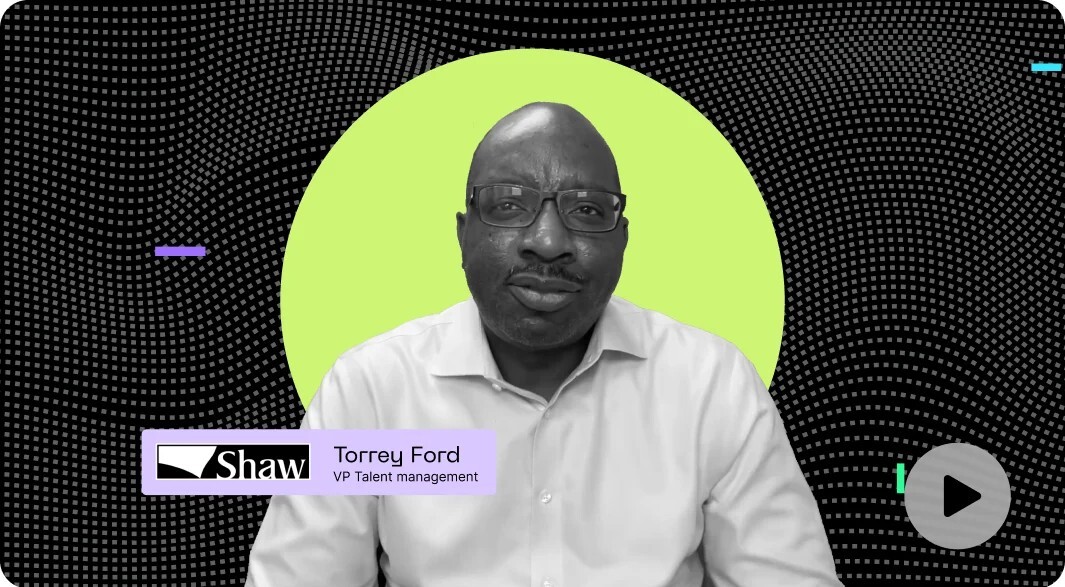
Why Shaw Chose to Buy and Build with One Model
“It was important for us to find a solution that could deliver value now and then help us build in the future, so we can get more value out of our data. We loved that One Model was partnering with us, not just handing us a tool.”
Struggling to collect talent data
"As the VP of Talent Management, I found myself looking to understand talent more holistically and needing to understand the state of our talent, especially talent that we were investing in our development programs," says Torrence Ford.
"I found myself working through spreadsheets, making a lot of phone calls, and sending a lot of emails just trying to understand who all had gone to those programs, what their current state was, what their aspirations were. It was extremely difficult to collect all that information and turn it into something relevant to the conversation I was having and maintain it.
We were trying to be proactive about partnering with talent to support their mobility efforts, but it was an extremely manual process. I couldn't move at speed with that information to really service the needs of the associates and the enterprise."
Centralizing data to extract more value
"One of our biggest challenges was getting information out of our HCM and into a place where we could really extract value from it. We like working with our Workday HCM. It's an extremely powerful platform that brings a lot of value, but we needed more data, more information. We could get some basic reporting, but other data was just simply out of reach. It was either in other systems or in spreadsheets.
So we started looking for a solution that could really could bring all that together for us. Our Director of People Analytics found One Model at a conference our data scientist was attending. We learned that their service is what we needed to extract our data into a structure and then get value out of it.
We loved that One Model was partnering with us and not handing us a tool. Once we partnered with One Model and started moving forward, there was a lot of excitement, energy, and urgency around getting data and actionable insights."

A single source of truth
"One Model is a one-stop shop. Historically, we've had to go to multiple places to get information. It's neat having a reliable reference point where we can get the data we need."

Flexible people analytics platform
"The platform provides users with dashboards, but we also have data analysts and data scientists doing advanced analytics work on top of that. One Model really services us in multiple ways."

Easy to use and distribute
"We can quickly retrieve information about talent participating in our leadership development programs. We can view retention or turnover data tailored to each role and function within the organization."
Gaining a people analytics partner
"With One Model, we had a true partner who knew what we did not know about extracting and integrating data. They were able to engineer the data and meet us where we were with our resources without the red tape of change orders. They said, 'Let us help you be successful.' That's rare and refreshing to find a truly value-added partner. And we appreciate that. One Model knew what we were trying to do because they had done it already.
Now, we have a partner to get us to where we need to be as a business. Over the past year and a half, we've positioned a lot of data in One Model and created a lot of assets through One Model dashboards that bring us information and set us up to do things that we've never been able to do before. There's more data, there's more information, there's more insights.
Looking forward, we've got to continue to bring data in from other sources. Our future with One Model is going to be focused on partnering with them to get more value out of our data as well as leverage OneAI more."

Better talent insights
"We're getting insights we couldn't get with traditional methods. What used to take months can now be done in days or even hours."

Trusted partners for success
"One Model uses their skills, knowledge, and experience to fill in your gaps and, ultimately, help you meet the needs of your business."

Improved attrition visibility
"Our data science team is currently building a predictive attrition model using One Model. We want to know what someone's intent to quit is, so we can proactively respond to turnover."
Ready to learn more about One Model?
Fill out the form, and we'll be in touch!
